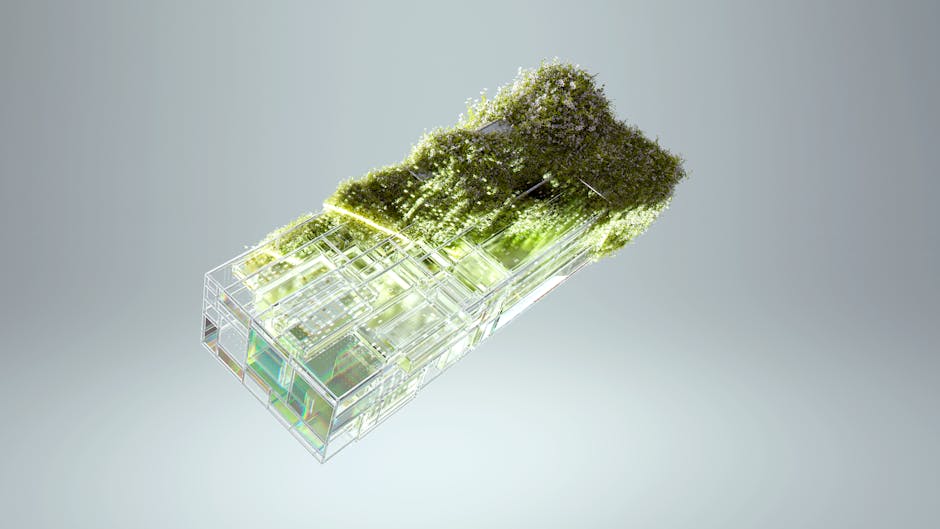Elevate Your EV Experience: Biophilic Design Transforms Interiors
In recent years, as electric vehicles (EVs) have surged in popularity, we find ourselves not just discussing their performance or environmental benefits, but also the emotional and psychological impact they have on our lives. Among the facets of modern automobile design, one increasingly important concept is biophilic design. Imagine stepping inside an EV that feels like a serene escape in nature—a space that nurtures emotional well-being while you traverse the urban jungles or open roads. Let’s dive into this fascinating intersection of automotive engineering and nature-inspired aesthetics, revealing how biophilic design can truly enhance our driving experiences.
Understanding Biophilic Design

Biophilic design originates from the idea that humans have an innate connection to nature. This is reflected in architecture, urban planning, and, more recently, interior design within vehicles. Essentially, biophilic design aims to create spaces that promote a sense of well-being and connectedness by bringing elements of nature indoors. This might involve incorporating natural materials, maximizing natural light, or implementing designs that mimic natural forms.
In an EV, this approach can turn the interior into a calming sanctuary. By tapping into our inherent affinity for nature, automakers can enhance our emotional engagement with their vehicles while simultaneously addressing the mental impact of time spent in traffic or on long drives.
Benefits of Biophilic Design in EVs

As the demand for electric vehicles grows, the need to penetrate deeper into consumer emotions has never been more pressing. Biophilic design offers multiple layers of benefits that can alter not just how we perceive our vehicles, but how we interact with them.
1. Stress Reduction

Anxiety can be an unfortunate companion during commutes, especially in heavily populated areas. As discussed in our post on the mindful drive, the design elements inspired by nature—such as organic forms, natural light, and even the inclusion of plants—can significantly reduce stress levels. With features like soothing ambient lighting resembling the colors of a sunset or textures akin to wood, an EV transforms from a mere transportation tool to a therapeutic space.
2. Increased Comfort

Comfort in vehicles is mainly dictated by materials and design quality. A few EV manufacturers are now focusing on using sustainable materials derived from natural sources. This not only reduces carbon footprints but makes the interiors feel more organic and inviting. Imagine sitting on seats that offer ergonomic support while being made from plant-based fibers. This approach captures the essence of biophilic design, encouraging an emotional connection that translates into a more enjoyable driving experience.
3. Enhanced Concentration and Cognitive Function

Biophilic design doesn't just provide aesthetic pleasure; it can also enhance focus and cognitive performance. Researchers have found that when our surroundings integrate nature-inspired elements, we experience improved mental clarity and memory retention. The tranquil aesthetics of a biophilic EV can reduce cognitive fatigue, allowing for more concentrated and enjoyable driving.
Notable Examples of Biophilic Design in Modern EVs

Leading automotive brands are starting to embrace biophilic design principles, not just for aesthetics, but also to align with the growing consumer interest in sustainability and well-being.
Tesla's Minimalist Approach

Tesla has long been recognized for its minimalist interior designs. By using panoramic glass roofs that provide extensive natural light and visibility of the sky, Tesla’s interiors create an airy atmosphere that connects drivers with their surroundings. This approach reduces feelings of claustrophobia, catering to a more relaxed driving experience.
Rivian’s Nature-Focused Interiors

Rivian, the new player in the EV market, has taken a more robust approach by incorporating both functionality and biophilic elements. Their use of sustainable materials, like reclaimed wood and naturally derived plastics, provides not just a low-impact production process, but also a tactile experience that evokes warmth and nature. For instance, their innovative “gear tunnel” not only serves functionality but also integrates with nature-inspired aesthetics.
The Influence of Natural Soundscapes

Another fascinating layer of biophilic design is the use of soundscapes. Cars are increasingly adopting nature-like sound profiles that mimic organic auditory experiences, such as rustling leaves or gentle streams. An original exploration of soundscapes in EVs reveals how these elements strategically help reduce road rage and emotional distress, allowing drivers to engage with their surroundings positively.
Integrating Nature: Materials and Technology
To fully embrace biophilic design in EVs, manufacturers are also looking at innovative materials and technologies. Eco-friendly textiles for upholstery, natural rubber for flooring, and water-based adhesives are gaining traction. Companies like BMW are exploring these avenues while also incorporating intelligent technologies that adapt to driver preferences, creating a personalized, nature-inspired journey.
The Role of Sustainability
Biophilic design aligns beautifully with sustainable practices, making it crucial in the current automotive landscape. More consumers are considering the ecological footprint of their choices. EV manufacturers are thus focusing not only on reducing emissions but also on employing sustainable sourcing for materials, reflected in the interior designs. For instance, a common trend involves using bio-based materials, which are derived from renewable resources, to create interior elements that are both environmentally friendly and appealing.
The Psychological Benefits of Nature in EVs
The importance of psychological wellness in vehicle design cannot be understated. As people spend more time in their cars, particularly in urban settings, the interiors must evoke feelings of tranquility and comfort. The biophilic principles guide this need, translating raw natural elements into practical design solutions.
Creating a Sense of Place
A great vehicle design instills a sense of place, making drivers feel at home. By tuning an EV’s interior with biophilic elements inspired by natural environments, manufacturers create an ambiance that fosters emotional connections. For instance, using color palettes inspired by landscapes—like earthy greens and blues—can evoke an emotional response and enhance the driving experience enormously.
The Connection to Mental Wellness
Research indicates that spending time in nature improves mental health by reducing anxiety and stress levels. By bringing those elements into the driving experience, biophilic design contributes to promoting mental wellness among drivers. This connection is important as we navigate the demands of modern life and seek solace in our everyday journeys.
Future Trends in Biophilic EV Design
As we continue to lean towards sustainable mobility solutions, the future of biophilic design in EVs looks promising. Manufacturers are beginning to experiment with new technologies to better align vehicle interiors with consumers’ emotional and psychological expectations.
Smart Features and Personalization
With the advent of AI and machine learning, the opportunity to personalize the driving experience is becoming a reality. Imagine a cabin that adjusts lighting based on the time of day or enhances ambient soundscapes according to your mood. Such technologies, when combined with biophilic designs, can elevate the overall user experience dramatically. For example, research on AI personalizations shows promising results, indicating that customization can foster emotional connections with vehicles.
Biophilic Urbanism and Future Infrastructure
Urban environments also play a significant role in biophilic design. As we lean towards sustainable city planning, integrating green spaces and nature into urban designs can enhance both public and vehicular settings. Concepts like green roads highlight how areas can become more nature-friendly, affecting both personal vehicles and public transportation systems. Such innovations can work in tandem with biophilic EV interiors, promoting consistency between the experience inside and outside the vehicle.
Nature-Led Innovations
More automotive brands are exploring how nature-led innovations could manifest in their designs. From changing the manufacturing process to embrace biomimicry—where design elements imitate nature—the aim is to nurture both human and environmental well-being.
Practical Steps for Consumers
So, how can you embrace biophilic design in your own driving experience? Here are a few practical steps that can enhance your connection with nature while driving, irrespective of your vehicle’s design.
-
Create Your Nature Playlist: Fill your driving time with soundscapes that mimic nature. Explore soundtracks featuring forest sounds, rain, and ocean waves to create a relaxing atmosphere.
-
Incorporate Plants: Use small, easy-to-maintain plants in your vehicle, or even consider mobile air purifying gadgets that simulate nature.
-
Choose Natural Materials: When selecting accessories for your vehicle, seek options made from sustainable materials.
-
Mindful Driving: Practice mindfulness techniques that draw on natural imagery to enhance your mental state while navigating traffic.
Final Thoughts
As biophilic design becomes a cornerstone in the design of electric vehicles, it opens a world of possibility that goes beyond aesthetics. It promotes emotional well-being, making journeys not just about reaching destinations but enriching experiences filled with comfort and connection.
Our appetite for nature should not be confined to our weekends or vacations. Instead, as we embrace the advancements in EV design, why not find solace in biophilic interiors during our everyday drives? With thoughtful design, we have the power to transform our vehicles into truly restorative spaces, allowing us to thrive in our fast-paced lives. Making the conscious choice to engage with designs that reflect our natural surroundings is a step towards better mental wellness on the road.
As you consider your next electric vehicle purchase, dive deeper into how biophilic design can enhance your experience. With innovative designs pushing the boundaries of what a vehicle can be, it’s an exciting future for EMs that combines our love for nature and our commitment to sustainability.



